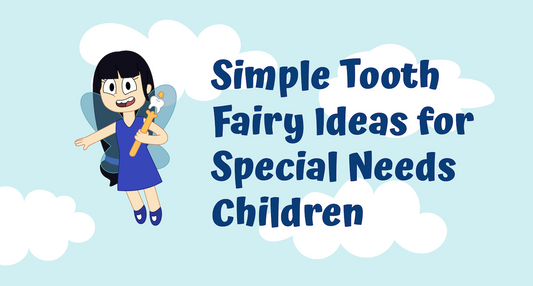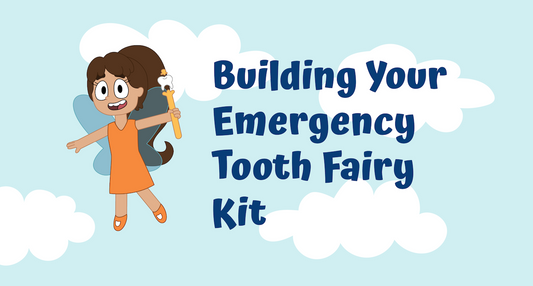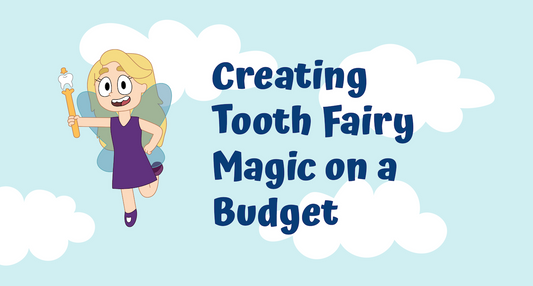When your child places that precious baby tooth under their pillow, the age-old question arises: how much should the tooth fairy leave behind? Today's parents navigate a complex landscape of tooth fairy expectations, regional differences, and the desire to make each tooth loss special without breaking the bank. This comprehensive guide helps you establish your family's tooth fairy economy with confidence and purpose.
The Current Tooth Fairy "Market Rate"
Recent surveys show the national average for tooth fairy gifts has reached approximately $5.36 per tooth—a significant increase from previous generations when a quarter or dollar was standard. However, this average masks considerable variation:
Regional Differences:
- Northeast: $7.36 (highest regional average)
- South: $5.77
- West: $5.54
- Midwest: $4.27 (lowest regional average)
First Tooth Premium: Many families designate a higher amount (often $10-20) for the milestone first tooth, with subsequent teeth receiving more modest amounts. For creative ways to make this first tooth extra special, check out our ideas for magical tooth fairy celebrations.
Tooth Type Valuation: Some families create tooth "pricing charts" with higher values for molars and canines compared to smaller incisors, mimicking real-world economics of size and difficulty. This approach acknowledges the different types of teeth and their developmental timeline.
Factors to Consider When Setting Your Rate
Rather than simply following national averages, consider these factors when establishing your family's tooth fairy tradition:
Family Financial Situation: Choose an amount that feels comfortable within your budget, recognizing that consistency is more important than amount.
Community Standards: Consider what other families in your immediate circle typically give to avoid significant disparities that might raise questions.
Long-Term Sustainability: Remember that children lose 20 baby teeth over several years—establish a practice you can maintain consistently.
Your Family Values: Align tooth fairy gifts with your overall approach to money, rewards, and special occasions.
Child's Age and Understanding: Younger children may be equally thrilled with smaller amounts, while older children might compare with peers more directly. Be prepared to address questions about differences in tooth fairy giving between families.
Creative Alternatives to Cash
While money is traditional, many families are exploring alternatives that create more meaningful tooth fairy experiences:
Special Coins:
- Collectible coins (state quarters, dollar coins)
- Foreign currency from places you've visited
- Gold-colored coins for added magic
Growth-Minded Options:
- Deposits into a savings account with a special certificate
- Small investments in a college fund
- Contribution toward a larger goal (with a note explaining the deposit)
Experience Gifts:
- Movie ticket
- Small gift card for a special treat
- "Coupon" for a special outing or activity
Tooth-Themed Items:
- Toothbrush with favorite character
- Fun dental care items
- Books about teeth or the tooth fairy
For more inspiration, see our complete guide to creative tooth fairy gift alternatives.
Creating a Meaningful Exchange Beyond Money
The true value of the tooth fairy tradition lies not in the monetary exchange but in the magical experience and life lessons it provides:
Personalized Fairy Notes: Include tiny handwritten notes (in special fairy handwriting) that comment on their dental care habits, congratulate them on their growth, or share what will happen to their special tooth. Learn how to craft enchanting tooth fairy notes that children will treasure.
Fairy Evidence: Leave behind traces of fairy dust (fine glitter), tiny footprints, or other signs of your nighttime visitor to enhance the magic.
Tooth Certificates: Create official documents that commemorate each lost tooth, building a collection throughout their tooth-losing years.
Two-Way Communication: Encourage your child to write notes or ask questions of their tooth fairy, creating an ongoing magical dialogue. The Hi Tooth Fairy app makes this interactive communication even more engaging with direct messaging to the fairy friends.
Managing Expectations and Inconsistencies
Tooth fairy practices often require some explanation, especially when:
Friends Receive Different Amounts: "The tooth fairy brings different gifts to different families, just like how some families have different rules or traditions."
Inflation Occurs: If amounts need to increase over time, a note explaining that the "tooth fairy economy" has changed can help explain the difference.
The Tooth Fairy "Misses" a Night: "Even magical beings get busy sometimes! The tooth fairy collects thousands of teeth each night and occasionally needs an extra day to make the rounds."
Multiple Children Have Different Experiences: Try to maintain reasonable consistency between siblings while acknowledging that the tooth fairy may evolve her practices over time.
Teaching Financial Literacy Through the Tooth Fairy
The tooth fairy tradition offers excellent opportunities to introduce money concepts:
Saving vs. Spending: Guide children to save some tooth fairy money toward larger goals while enjoying spending some immediately.
Tracking and Recording: Create a tooth fairy ledger where children record each tooth and the gift received, building math and record-keeping skills. This can become part of your tooth fairy memory collection.
Giving Components: Consider incorporating charitable giving into your tooth fairy tradition, with a portion of each "payment" designated for a cause your child cares about.
Value Conversations: Use tooth fairy gifts as conversation starters about what things cost, how money is earned, and how to make thoughtful decisions about resources.
The Tooth Fairy Around the World: Economic Practices
Different cultures have fascinating economic approaches to tooth traditions:
Spain and Hispanic Countries: Ratoncito Pérez (the tooth mouse) leaves small gifts or coins under pillows or in water glasses.
Italy: The tooth fairy equivalent, "Fatina dei denti," leaves small gifts rather than just money.
South Africa: Lost teeth are placed in slippers rather than under pillows for the mouse to find and exchange.
Middle Eastern Countries: Children often throw teeth toward the sun, asking for stronger replacements rather than receiving monetary rewards.
For more about these fascinating traditions, visit our guide to global tooth fairy customs.
Conclusion: Establishing Your Family's Tooth Fairy Economy
Creating your family's tooth fairy tradition is ultimately about what feels right for your values, budget, and children's needs. The most successful tooth fairy economies emphasize:
- Consistency in practice
- Magic over monetary value
- Personalization that acknowledges each child's unique journey
- Balance between immediate joy and longer-term lessons
- Meaningful communication and connection
Whether your tooth fairy leaves gold coins, special notes, practical gifts, or traditional dollar bills, the most valuable currency exchanged is the childhood wonder and family connection created through this magical tradition.
The tooth fairy visits for a relatively brief period in childhood—typically from ages 6-12. By creating a thoughtful approach to these special exchanges, you're building memories and traditions your children will treasure long after they've outgrown believing in the magic.
Want to make the tooth fairy experience even more magical? The Hi Tooth Fairy app introduces children to Birdie, Frankie, Lulu, Piper, Tulip, and Winnie – the six tooth fairy friends from Flutterville who collect teeth to power their magical world!
Reference for Tooth Fairy Going Rate: The tooth fairy going rate statistics are based on the 2023 Original Tooth Fairy Poll conducted by Delta Dental, which has tracked the tooth fairy's annual giving trends since 1998. For more information, visit: Delta Dental Tooth Fairy Poll




